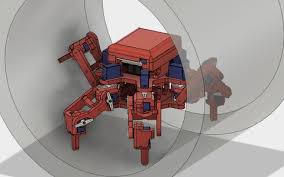
It is backed by the Engineering and Physical Sciences Research Council (EPSRC) as part of a government drive to improve Britain’s international competitiveness in robotics.
According to Leeds, it will give researchers – and commercial partners – access to a range of technologies such as 3D printing technology, a high-precision cutting system that fires a laser beam through a jet of water and “micromanipulators” for assembling tiny robots.
“We looked at the most innovative robots being made around the world and made sure that the facility would have the capability to build them,” said Dr Rob Richardson, Director of the Institute of Engineering Systems and Design at the University’s School of Mechanical Engineering. “We then added a suite of equipment that will enable us to build robots using new and innovative techniques. We will be building new robots that can do new things in areas that matter to people’s lives.”
“The key to the capability of this new facility is its ability to integrate hard and soft mechanical structures with electric systems and computing in incredibly compact and complex ways. The human body is built from rigid bones, soft tissue, muscles, sensory organs and communications pathways, all squeezed into the smallest possible space. We hope to be able to use this inspiration to build robots with ever more integrated parts and increased capabilities.”
The University’s robotics research ranges from minimally invasive surgery to the exploration of ancient pyramids. The university states:
One device with feet modelled on tree frogs is being designed to crawl inside patients’ bodies during abdominal surgery. Another robot will travel inside the colon to screen for cancer, while a new project is looking at ways to develop more “intelligent” prosthetics that anticipate and work with users’ body movements to improve function.
An international team, academically led by Dr Richardson, developed a robot that was able to explore previously inaccessible tunnels in the Great Pyramid of Khufu in Egypt, uncovering mysterious markings apparently left by its builders.
Other exploratory robots apparently include an electric “mole”, which is designed to dig through rubble in disaster zones, and a giant worm-bot, which mimics the nervous system of a real nematode worm.
How do the figures break down? The EPSRC is spending £2.6 million on equipment for the new facility, part of a £85-million nationwide investment in capital equipment to support existing research into robotics and autonomous systems, advanced materials and energy storage. The University will invest a further £1.2 million in equipment and lab improvements and industry will contribute £0.5 million, resulting in a total investment of £4.3 million.
 Electronics Weekly Electronics Design & Components Tech News
Electronics Weekly Electronics Design & Components Tech News



